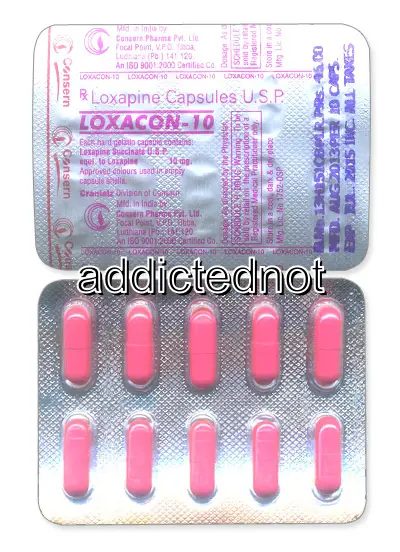| Package | Dosage | Price | Price per Dose | |
|---|---|---|---|---|
| Dosage: 10mg | ||||
| 360 pill | 10mg | €476.61 | €1.32 | |
| 180 pill | 10mg | €259.18 | €1.44 | |
| 120 pill | 10mg | €191.50 | €1.60 | |
| 90 pill | 10mg | €154.06 | €1.71 | |
| 60 pill | 10mg | €110.86 | €1.84 | |
| 30 pill | 10mg | €64.78 | €2.16 | |
| Dosage: 25mg | ||||
| 360 pill | 25mg | €679.64 | €1.89 | |
| 180 pill | 25mg | €381.57 | €2.12 | |
| 120 pill | 25mg | €287.97 | €2.40 | |
| 90 pill | 25mg | €234.70 | €2.61 | |
| 60 pill | 25mg | €171.34 | €2.85 | |
| 30 pill | 25mg | €100.78 | €3.36 | |

Loxapine Description
Overview of Loxapine
Loxapine is an antipsychotic medication used primarily to manage symptoms of schizophrenia and other psychotic disorders. It belongs to the class of medications known as typical or first-generation antipsychotics. This drug works by affecting certain chemicals in the brain, particularly dopamine receptors, to help reduce hallucinations, delusions, and agitation. Loxapine is often prescribed when other treatments have not provided sufficient relief or for acute episodes of psychosis.
Mechanism of Action
The effectiveness of Loxapine comes from its ability to block dopamine receptors in the brain. By reducing excessive dopamine activity, it helps control the positive symptoms of schizophrenia, such as hallucinations and paranoid thinking. Additionally, Loxapine also has some influence on serotonin receptors, which may contribute to its overall therapeutic effects and side effect profile. Its mechanism allows for quick onset of action but also necessitates careful monitoring due to potential side effects.
Administration and Dosage
Loxapine can be administered orally in the form of tablets or syrup. In some cases, it may be given via intramuscular injection for rapid management of acute psychotic episodes. The dosage varies depending on the severity of symptoms, patient's age, response to the medication, and tolerability. It is typically started at a low dose and gradually increased. Patients should follow their healthcare provider’s instructions precisely to minimize side effects and achieve optimal results.
Potential Benefits
This medication is effective in alleviating the core symptoms of schizophrenia, improving mood, and decreasing agitation. It may help patients regain their social functioning and improve their overall quality of life. For acute episodes, Loxapine can provide rapid symptom relief, which is crucial for preventing deterioration. Its relatively quick onset makes it useful in emergency psychiatric settings.
Risks and Side Effects
Despite its benefits, Loxapine carries a risk of side effects that should be carefully monitored. Common adverse effects include drowsiness, dry mouth, dizziness, and weight gain. More serious risks involve movement disorders such as tardive dyskinesia or extrapyramidal symptoms, which require immediate medical attention. Some patients may experience elevated blood sugar or cholesterol levels, reinforcing the need for regular health check-ups during treatment. Rare but severe side effects include neuroleptic malignant syndrome, a potentially life-threatening condition.
Precautions and Considerations
Patients on Loxapine should inform their healthcare provider about any pre-existing health conditions, especially heart problems, epilepsy, or liver disease. Combining Loxapine with alcohol or other sedatives can intensify drowsiness and dizziness. Pregnant or breastfeeding women should discuss the risks and benefits with their doctor, as safety data are limited. Regular monitoring of blood work and clinical assessments are essential for ensuring safe usage over the course of treatment.
Conclusion
Loxapine remains an important option for managing schizophrenia and other psychotic disorders. Its ability to rapidly control symptoms makes it valuable for acute cases. However, it requires careful oversight due to potential side effects. When prescribed and used under medical supervision, Loxapine can contribute significantly to the stabilization of mental health conditions, improving patients' overall well-being and functionality.
